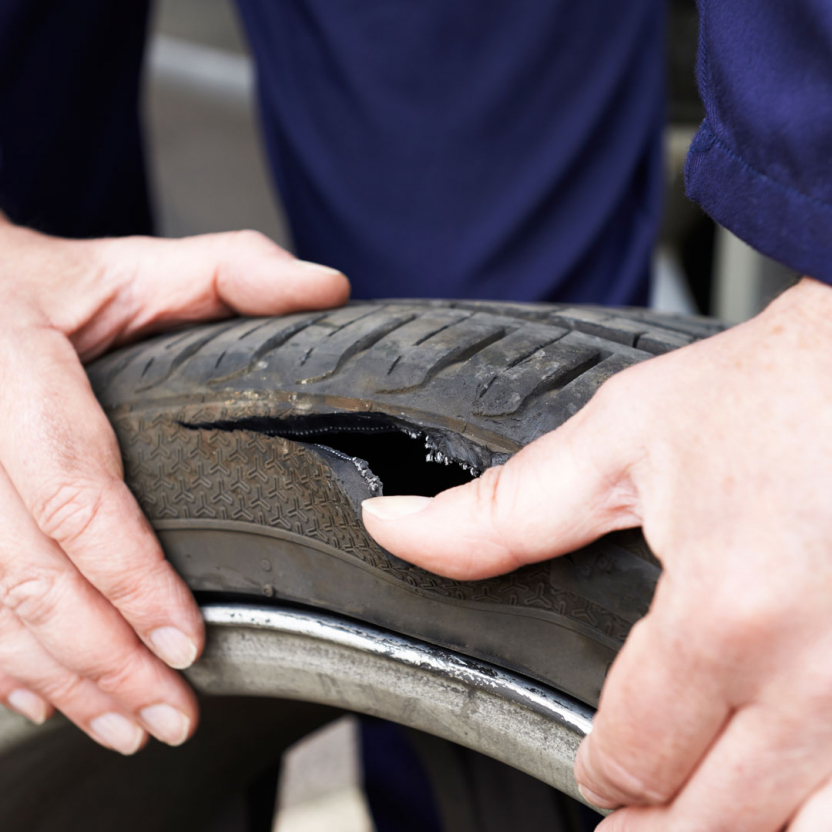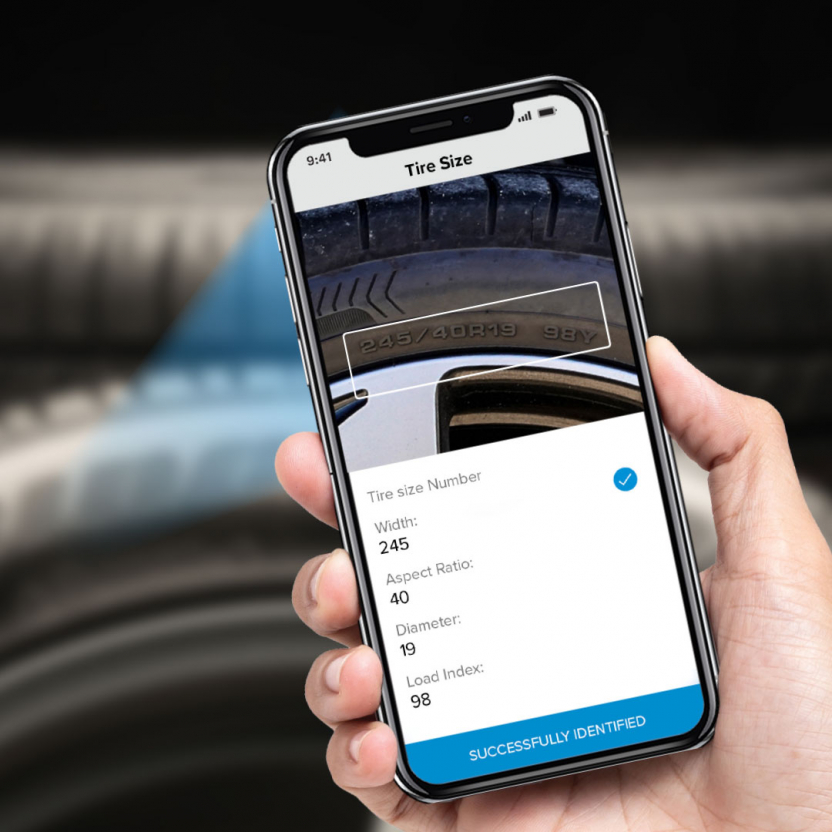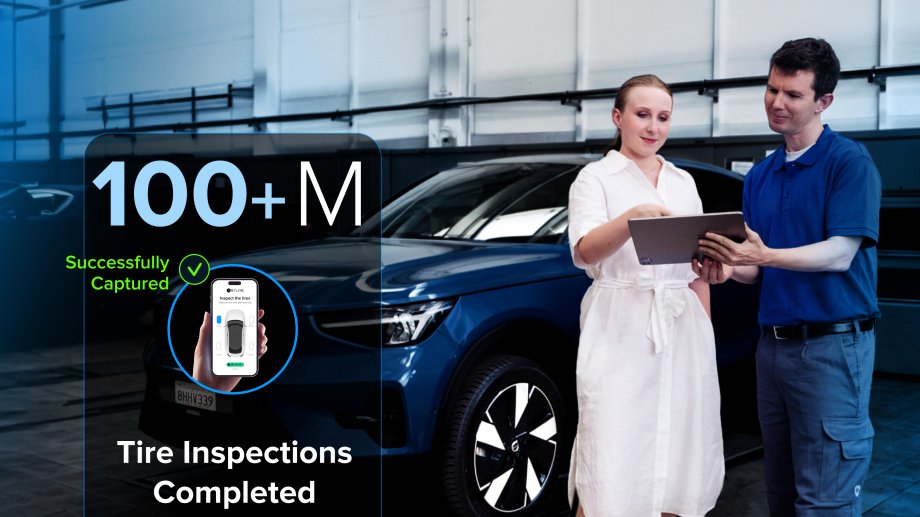
Why a tyre size scanner improves customer loyalty
Tyres aren’t an equipment item that most customers think much about. And most of the time, they only buy new tyres when their own are either too old or too worn out. It means that the timeframe during which customers are interested in information and offers about tyres is very limited, and most customers will look for the best offer available on the market, regardless of which company is offering.
But this doesn’t mean that tyre dealers cannot act to retain customer loyalty, and technology provides ways to take actions in that direction.

How data allows tyre dealers to anticipate customers’ needs
As mentioned above, most customers will only buy new tyres when they have an immediate need for it:
- Tyres are reaching a certain level of worness, which decreases their performance and presents a risk for the customer’s safety. It can be either tread depth that’s too shallow, or defects on treads that might jeopardise the integrity of the tyre.
- Tyres are ageing. Most tyre dealers and road safety organisations generally recommend car users to either thoroughly check tyres that are 5 years old or older, or to replace them for new sets of tyres.
In both cases, tyre dealers and service providers could have this information at disposal. When a customer comes into a service centre, technicians will check tyres and can get this information:
- What is the tread depth on each tyre? Maybe it’s too shallow already, but in most cases it will be in the middle. Tyres are not new but they are not worn out yet. However, recording tread depth gives tyre dealers a good idea of the rate at which tyres are wearing out, and when they will probably need to be changed.
- Recording the DOT code of each tyres makes tyre service centres aware of their age, as the manufacturing date of each tyre is moulded at the end of the DOT code. It gives tyre service providers the information needed to know when the customer’s tyres will either need a closer inspection, or replacement due to old age.
Knowing customers’ tyre size is essential to send them offers
If the tread depth and DOT code allow tyre service providers to anticipate when customers will need new tyres, this data is not enough on its own. Tyres come in many different sizes and with different specifications, and it’s complicated for customers to navigate through hundreds of tyre models and to find the right one for their vehicle.
Fortunately, each tyre has its size and specifications moulded on the sidewall. This code gives every information about the dimensions of the tyre, the rim, the workload index and the speed to which a tyre can give high performance. If customers might not know their way around tire size codes, tyre dealers and service providers do. And by recording this information when a customer buys new tyres or comes in for maintenance, tyre dealers have all the information needed to build a tailor-made offer when the time comes for customers to buy new tyres.
Building a tailor-made offer that suit customers’ needs
When a tyre dealer has the right information at their disposal, it becomes much easier to take action to build up customer loyalty:
- With tyre tread depth and DOT codes, a tyre dealer can foresee replacement opportunities.
- With the tire size code, they are able to select models of tyres that are a perfect fit for the customer’s vehicle.
It translates into an offer that is well timed, and well targeted. And not only that, it also shows customers that their tyre dealer or service provider knows exactly what they are looking for and when they are looking for it. It builds up a solid relationship and improves customer satisfaction along the way.
Gathering data is a difficult task
On paper, gathering all that data is great, but it can be a complicated process for tyre dealers that needs adjustments and discipline:
- Getting the information from each tyre sidewall is very time-consuming and it takes time from tyre technicians. During that time, they are not able to provide service or advice to customers. On average, recording DOT codes from a car takes more than 2 minutes, which adds up at the end of the day.
- Tyre size and DOT codes are a long series of numbers and letters, and even the most focused technician will make a mistake now and then. It’s only human. The problem is that having a wrong record can result in an offer that is poorly timed, or that presents the wrong tyre models to customers. And if getting things right might seem normal to customers, they are usually less inclined to forgive mistakes.

How a tyre size scanner just makes it easier
Hopefully for tyre dealers, there are solutions out there to make the data gathering process much faster and easier. A tyre size scanner uses OCR (Optical Character Recognition) to get the information directly from the tyre sidewall, and digitise it instantly. Anyline’s tire size scanner can be used on every mobile device that is equipped with a camera, such as a smartphone, ruggedised device or even some TPMS devices.
And the benefits of a tire size scanner can be enormous for tyre dealers:
- It’s very fast – a tyre technician can scan the tyre size of each set of tyres in a few seconds.
- It’s accurate – a tyre scanner won’t make the mistakes a technician will eventually do. The Tyre size code is scanned precisely and can be verified by the technician before validation.
- It’s digitised – with a tyre size scanner, the data is directly digitised and can be sent to the garage system or database. It doesn’t require technicians or employees to type in the information, which would be an additional risk for mistake and a waste of their time.
How to integrate a tyre size scanner in your existing processes
Integrating a tyre size scanning solution to your existing processes is made nice and easy with Anyline’s software development kit (SDK). The technology can be integrated into your app or software, and works on any standard smartphone, ruggedized device or camera-enabled TPMS device running on Android, iOS and UWP, as well as popular platforms like Xamarin, React-Native, UWP, and Cordova.
It can also be combined with a DOT code scanner, as well as VIN and licence plate scanning solutions. And you don’t need to invest in new mobile devices, as it can be integrated on your existing ruggedised devices, TPMS or even technicians’ own smartphones.
If your organisation is aiming to add mobile scanning into its existing software infrastructure, the best first step is to request a 30-day free trial of our software development kit (SDK). With this, you will be able to quickly test out the technical capabilities of OCR for your needs.

